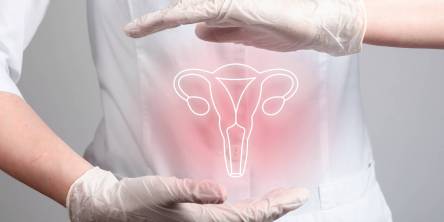5 Common Gynecological Issues That Can Affect the Cervix
The cervix is the lower part of the womb (uterus), where the fetus develops during pregnancy. A tiny hole in the cervix widens during birthing. It also lets menstrual blood exit her body. Many diseases can damage the cervix and produce numerous severe problems, impacting reproductive health and even causing infertility in women.
As a result, women should actively learn about these disorders in order to avoid and reduce their impact. In this article, we have gathered five common gynecological issues that can affect the cervix.
1. Cervicitis
Cervicitis is an inflammation of the cervix. It usually has no symptoms, and you may discover you have it after a pelvic examination conducted by your doctor for another reason. If you do experience symptoms, they may include:
- A significant amount of abnormal vaginal discharge
- Painful and frequent urination
- Pain during intercourse
- Bleeding in between periods
- Vaginal bleeding after intercourse
Cervicitis is caused mainly by a sexually transmitted disease, such as chlamydia or gonorrhea. However, it can also develop from noninfectious reasons. Cervicitis can only be successfully treated if the underlying cause of the inflammation is addressed.
2. Cervical stenosis
Cervical stenosis is a disorder in which the cervix narrows or entirely closes, making the passage between the uterus and the vaginal canal difficult or impossible. Cervical stenosis might be present from birth due to a hereditary issue, or it can develop as a result of other disorders or operations. Cervical stenosis may cause minimal or no symptoms in some women, particularly those who have reached menopause.
Cervical stenosis has been linked to irregular periods, amenorrhea, dysmenorrhea, and infertility. Cervical stenosis can be treated by your gynecologist by physically expanding the cervix with dilators. Dilators are thin, lubricated rods that come in progressively bigger diameters and can be placed one at a time until the desired dilation is achieved.
3. Nabotian cysts
Nabothian cysts are tiny, mucus-filled cysts that develop on the cervix's surface. It is a benign lesion caused by squamous epithelial cell overgrowth. Nabothian cysts can be tiny or huge depending on the stage of development. Nabothian cysts seldom cause symptoms, and patients are generally unaware of the ailment until they visit a gynecologist.
Nabothian cysts are not life-threatening in general, although they might interfere with a woman's sex life and fertility. However, the majority of them resolve on their own without therapy. But, if the cyst becomes too big, it may rupture on its own, resulting in infection.
4. Cervical ectropion
Cervical ectropion (or erosion) is a completely benign condition. Because it is linked to estrogen, it is more frequent in young women, pregnant women, and those on combined oral contraceptive tablets. It might result in increased vaginal discharge or bleeding.
Ectropion is most often treated with the help of a burning technique (cautery) or by using an electrical current (diathermy). This procedure is performed under local anesthesia (when you are awake).
5. Cervical cancer
Cervical cancer is a form of gynecological cancer that develops in the cervix's cells. Cervical cancer in its early stages usually develops asymptomatically. Signs and symptoms of advanced cervical cancer include:
- Vaginal bleeding after intercourse, between periods, or during menopause
- Watery, bloody vaginal discharge that may be thick and odorous
- Pelvic pain
- Pain during sex
Most cervical cancers are caused by different strains of the human papillomavirus (HPV), a sexually transmitted virus. Cervical cancer develops when healthy cells in the cervix get DNA alterations.
If your doctor diagnoses cervical cancer, you will be subjected to further tests to assess the stage of your disease. Treatment for cervical cancer is determined by a number of criteria, including the stage, any other health issues you may be experiencing, and your personal preferences. Cervical cancer can be treated with the help of surgery, radiation, chemotherapy, or a combination of them.
Similar Articles
Uterine fibroids are benign tumors that develop in the uterine muscle tissue. According to the US Office on Women's Health (OWH), fibroids can grow as a single tumor or as a cluster in the uterus, and they can be as small as an apple seed or as large as a grapefruit.
Your pregnancy test came back positive, and nothing, not even early pregnancy symptoms like morning sickness or exhaustion, can dampen your spirits. However, it is natural to worry about what to do when you discover you are pregnant.
A breast lift, like any other operation, involves skin incisions. Scarring occurs when your skin generates new tissues and mends the wound after an incision. There are, however, measures to reduce scarring before, during, and after a breast lift.
The cervix's proper functioning is crucial to a woman's reproductive health and fertility. However, most women do not know anything or have a limited understanding of it. As a result, there are numerous misconceptions surrounding cervical health.
Do many nighttime wake-up calls or interruptions to your daytime activities result from frequent bathroom visits? Six to seven trips to the bathroom in a 24-hour period is normal for most people. However, urinating more frequently could be a symptom of a serious problem.
Shatavari is a very renowned ayurvedic herb containing plenty of health benefits. It is also known as the universal rasayan. The word shatavari refers to a woman with a hundred husbands signifying the traditional use of this herb to boost the reproductive system of the body.
Despite the fact that around half of the world's population experiences, will experience, or has experienced menstruation, misunderstandings regarding this biological process remain.
Throughout your life, you may anticipate getting your period roughly 450 times. Even if you've gotten the hang of your cycle, there's a good possibility that some menstruation mysteries remain unanswered
Annual gynecological check-ups are essential for every woman to stay healthy. However, there are a lot of conditions that require medical attention. You should understand that the sooner you will be diagnosed and treated, the easier and more effective the treatment will be









